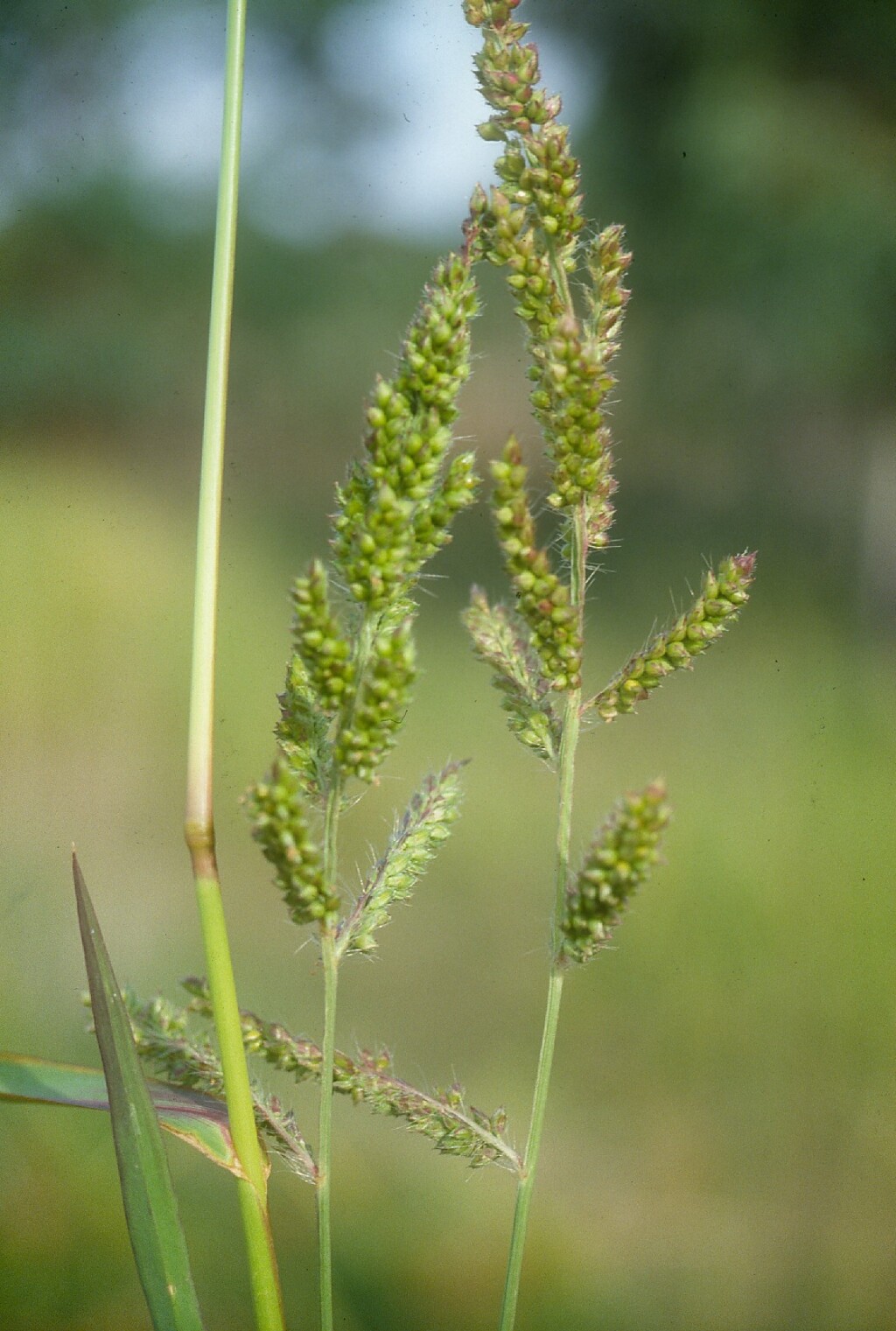Echinochloa crus-galli
(L.) P.Beauv. Barnyard GrassTufted annual. Culms erect, to 150 cm high. Leaves glabrous; blade flat, 10–35 cm long and 6–20 mm wide, margins often undulate. Panicle 6–20 cm long, fully exserted from upper sheath at maturity, often purplish; primary branches up to 15, spreading from main axis, 2–10 cm long, scabrous, with several bristles subtending each group of spikelets. Spikelets 3–3.7 mm long (excluding awns); lower glume 3–5-nerved, ovate, c. 1 mm long, hairy, mucronate; upper glume 5-nerved, as long as spikelet (excluding awns), acuminate or with an awn to c. 1 cm long, dorsally rounded, bristly along the nerves, often pubescent between nerves; lower floret neuter; lower lemma equal to upper glume but flat, long-acuminate and/or with an awn to 5 cm long, palea slightly shorter than body of lemma, membranous; upper lemma subequal to spikelet, dorsally rounded, smooth, pale, tapered abruptly to the short (to 0.5 mm long) membranous, often recurved or distorted apical point. Flowers Nov.–Apr.
MuM, Wim, GleP, VVP, VRiv, MSB, RobP, MuF, GipP, OtP, Gold, CVU, DunT, NIS, EGL, EGU, HSF, HNF, Strz, VAlp. Naturalised in all States. In Victoria, commonest in areas receiving plentiful water during warmer months, normally a weed of gardens and roadsides, rarely invading native vegetation. An exceedingly variable species, with several forms developed for grain, fodder etc.
Walsh, N.G. (1994). Poaceae. In: Walsh, N.G.; Entwisle, T.J., Flora of Victoria Vol. 2, Ferns and Allied Plants, Conifers and Monocotyledons, pp. 356–627. Inkata Press, Melbourne.
 Spinning
Spinning



